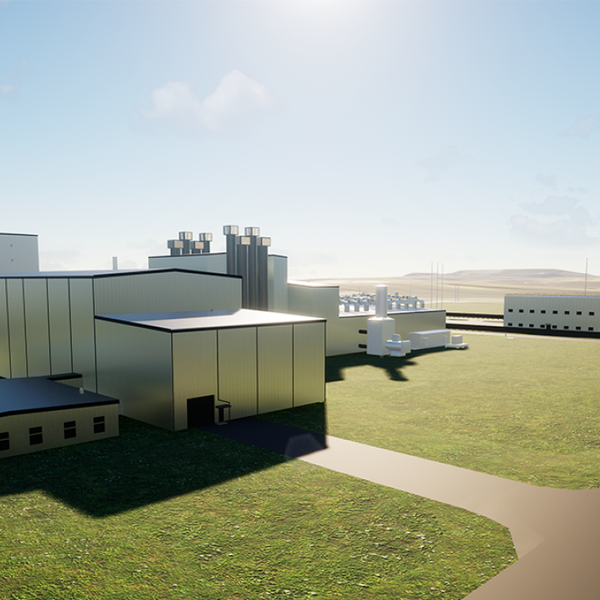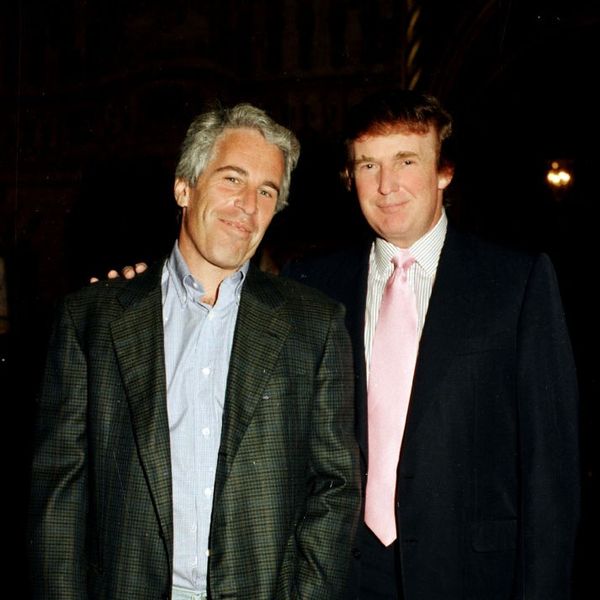EPA Plan to Raise Radiation Exposure Limits Sparks Internal Debate
The U.S. Environmental Protection Agency is considering dramatically increasing the allowable level of radioactive contamination in water, food and soil after radiological incidents such as spills or "dirty bomb" attacks.
The move preceded the nuclear disaster now unfolding in Japan in the wake of last month's devastating earthquake and tsunami. Documents released today by the whistleblower group Public Employees for Environmental Responsibility show the plan has sparked concerns within EPA.
The agency's Office of Radiation and Indoor Air (ORIA) has prepared an update of the 1992 "Protective Action Guides" for radiation exposure. Other EPA divisions have raised concerns about how much the new guidelines would raise allowable exposures.
As Charles Openchowski of EPA's Office of General Counsel wrote in a January 2009 e-mail to ORIA:
"[T]his guidance would allow cleanup levels that exceed MCLs [Maximum Contamination Limits under the Safe Drinking Water Act] by a factor of 100, 1000, and in two instances 7 million and there is nothing to prevent those levels from being the final cleanup achieved (i.e., it's not confined to immediate response of emergency phase)."
Other EPA officials have raised concerns that drinking water containing radioactive contamination at the proposed limits would result in acute health effects such as vomiting and fever. PEER obtained the internal EPA e-mails after filing a lawsuit last fall under the Freedom of Information Act. It is still waiting for the agency to turn over thousands more communications.
"This critical debate is taking place entirely behind closed doors because this plan is 'guidance' and does not require public notice as a regulation would," said PEER Counsel Christine Erickson.
PEER sent EPA Administrator Lisa Jackson a letter today calling for a more open and broader examination of the proposed radiation guidance.
A comprehensive 2005 report from the National Academy of Sciences found there is no safe dose of low-level radiation, with no threshold of exposure below which radiation can be shown to be harmless.
"The health risks -- particularly the development of solid cancers in organs -- rise proportionally with exposure," said epidemiologist Richard R. Monson, chair of the NAS committee that issued the report and professor at the Harvard School of Public Health. "At low doses of radiation, the risk of inducing solid cancers is very small. As the overall lifetime exposure increases, so does the risk."
An Urgent Message From Our Co-Founder
Dear Common Dreams reader, The U.S. is on a fast track to authoritarianism like nothing I've ever seen. Meanwhile, corporate news outlets are utterly capitulating to Trump, twisting their coverage to avoid drawing his ire while lining up to stuff cash in his pockets. That's why I believe that Common Dreams is doing the best and most consequential reporting that we've ever done. Our small but mighty team is a progressive reporting powerhouse, covering the news every day that the corporate media never will. Our mission has always been simple: To inform. To inspire. And to ignite change for the common good. Now here's the key piece that I want all our readers to understand: None of this would be possible without your financial support. That's not just some fundraising cliche. It's the absolute and literal truth. We don't accept corporate advertising and never will. We don't have a paywall because we don't think people should be blocked from critical news based on their ability to pay. Everything we do is funded by the donations of readers like you. Will you donate now to help power the nonprofit, independent reporting of Common Dreams? Thank you for being a vital member of our community. Together, we can keep independent journalism alive when it’s needed most. - Craig Brown, Co-founder |
The U.S. Environmental Protection Agency is considering dramatically increasing the allowable level of radioactive contamination in water, food and soil after radiological incidents such as spills or "dirty bomb" attacks.
The move preceded the nuclear disaster now unfolding in Japan in the wake of last month's devastating earthquake and tsunami. Documents released today by the whistleblower group Public Employees for Environmental Responsibility show the plan has sparked concerns within EPA.
The agency's Office of Radiation and Indoor Air (ORIA) has prepared an update of the 1992 "Protective Action Guides" for radiation exposure. Other EPA divisions have raised concerns about how much the new guidelines would raise allowable exposures.
As Charles Openchowski of EPA's Office of General Counsel wrote in a January 2009 e-mail to ORIA:
"[T]his guidance would allow cleanup levels that exceed MCLs [Maximum Contamination Limits under the Safe Drinking Water Act] by a factor of 100, 1000, and in two instances 7 million and there is nothing to prevent those levels from being the final cleanup achieved (i.e., it's not confined to immediate response of emergency phase)."
Other EPA officials have raised concerns that drinking water containing radioactive contamination at the proposed limits would result in acute health effects such as vomiting and fever. PEER obtained the internal EPA e-mails after filing a lawsuit last fall under the Freedom of Information Act. It is still waiting for the agency to turn over thousands more communications.
"This critical debate is taking place entirely behind closed doors because this plan is 'guidance' and does not require public notice as a regulation would," said PEER Counsel Christine Erickson.
PEER sent EPA Administrator Lisa Jackson a letter today calling for a more open and broader examination of the proposed radiation guidance.
A comprehensive 2005 report from the National Academy of Sciences found there is no safe dose of low-level radiation, with no threshold of exposure below which radiation can be shown to be harmless.
"The health risks -- particularly the development of solid cancers in organs -- rise proportionally with exposure," said epidemiologist Richard R. Monson, chair of the NAS committee that issued the report and professor at the Harvard School of Public Health. "At low doses of radiation, the risk of inducing solid cancers is very small. As the overall lifetime exposure increases, so does the risk."
The U.S. Environmental Protection Agency is considering dramatically increasing the allowable level of radioactive contamination in water, food and soil after radiological incidents such as spills or "dirty bomb" attacks.
The move preceded the nuclear disaster now unfolding in Japan in the wake of last month's devastating earthquake and tsunami. Documents released today by the whistleblower group Public Employees for Environmental Responsibility show the plan has sparked concerns within EPA.
The agency's Office of Radiation and Indoor Air (ORIA) has prepared an update of the 1992 "Protective Action Guides" for radiation exposure. Other EPA divisions have raised concerns about how much the new guidelines would raise allowable exposures.
As Charles Openchowski of EPA's Office of General Counsel wrote in a January 2009 e-mail to ORIA:
"[T]his guidance would allow cleanup levels that exceed MCLs [Maximum Contamination Limits under the Safe Drinking Water Act] by a factor of 100, 1000, and in two instances 7 million and there is nothing to prevent those levels from being the final cleanup achieved (i.e., it's not confined to immediate response of emergency phase)."
Other EPA officials have raised concerns that drinking water containing radioactive contamination at the proposed limits would result in acute health effects such as vomiting and fever. PEER obtained the internal EPA e-mails after filing a lawsuit last fall under the Freedom of Information Act. It is still waiting for the agency to turn over thousands more communications.
"This critical debate is taking place entirely behind closed doors because this plan is 'guidance' and does not require public notice as a regulation would," said PEER Counsel Christine Erickson.
PEER sent EPA Administrator Lisa Jackson a letter today calling for a more open and broader examination of the proposed radiation guidance.
A comprehensive 2005 report from the National Academy of Sciences found there is no safe dose of low-level radiation, with no threshold of exposure below which radiation can be shown to be harmless.
"The health risks -- particularly the development of solid cancers in organs -- rise proportionally with exposure," said epidemiologist Richard R. Monson, chair of the NAS committee that issued the report and professor at the Harvard School of Public Health. "At low doses of radiation, the risk of inducing solid cancers is very small. As the overall lifetime exposure increases, so does the risk."

